Easily Fix Your Slow Computer After Power Outage
If your Windows computer experiences a power outage, it usually means it did not go through the proper shutdown process. 99% of the time, nothing will be wrong after a reboot. However, if you’re one of the unlucky few like me, the computer starts to perform slowly and exhibits other problems.
Before fixing a slow computer, it’s important to understand what a power outage can do to the Windows system and identify the causes of the outage, if it was directly linked to the computer itself.
Why do I have a slow computer after power outage problems?
A Windows computer may become slow or experience performance issues after a power outage for several reasons. Here are some common factors that could contribute to this:
File System Corruption – Sudden power loss can corrupt the file system on your hard drive. This corruption can cause issues when Windows tries to access files and data, leading to slow performance.
Hard Drive Issues – Power outages might affect the health of your hard drive. If the power loss occurs during a write operation, it can potentially damage the hard drive or corrupt data, impacting overall system performance.
Other Hardware Damage – In some cases, power outages can lead to hardware damage. While modern computers are designed to handle sudden power loss, repeated outages or electrical issues could potentially harm components such as the power supply.
Overheating – In a related matter, if the power outage is followed by a surge when the power is restored, it could potentially damage internal components or the power supply. Overheating due to damaged cooling systems can also lead to performance issues.
Background Processes and Services – After a power outage, certain background processes and services may be trying to recover or repair themselves, causing increased disk and CPU usage. This can result in slower performance until these processes are complete. If they fail, you may have a deeper system corruption problem to solve.
How to quickly fix a slow computer after power outages
Once you’ve ruled out or fixed property-wide power problems and you have a stable power source, it’s time to fix any damage caused to the Windows computer.
1. Scan for Malware and Update Windows
Whenever you experience a PC problem, malware can be at the root of it. That’s why you should always perform a full system scan before applying any other fixes.
Likewise, it’s important to install the latest Windows updates, so you know there are no security vulnerabilities contributing to the problem.
2. Run Check Disk
Windows has a in-built check disk utility (CHKDSK) to check if there is damage to your hard drive, which might be contributing to slow performance.
1. Type cmd in the start menu search bar and open the Command Prompt as administrator from the options on the right.
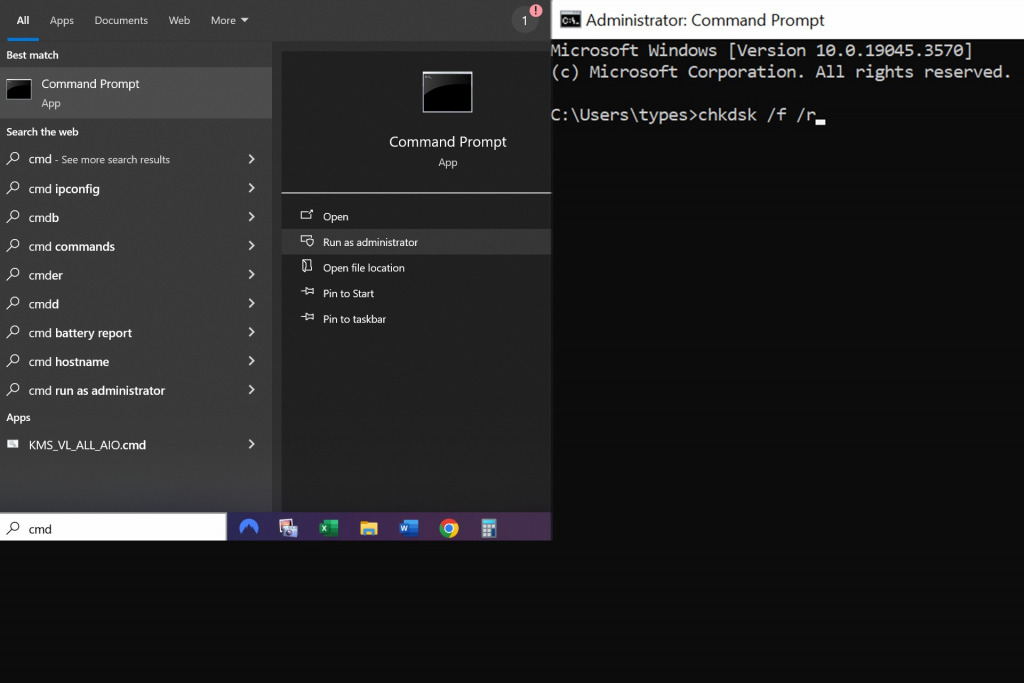
2. Type chkdsk /f /r andpress Enter to run the command. The /f command fixes errors it finds, and the /r command tells it to highlight any bad sectors that may require a hard drive replacement.
3. The scan will begin after a reboot and may reboot a second time before displaying the results.
3. Run Windows SFC and DISM Tools
If the slowness is caused by corruption to system files, the Windows System File Checker (SFC) and the Deployment Imaging Service and Management Tool (DISM) can help detect and repair these files.
1. Type cmd into the start menu search bar and open the Command Prompt with administrator privileges.
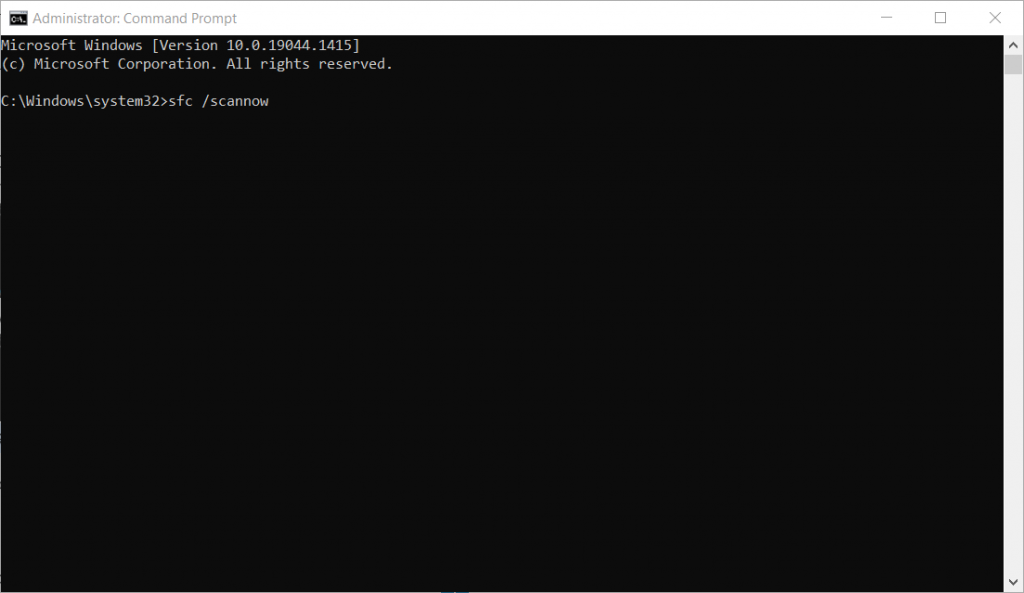
2. Type sfc /scannow and press Enter to start scanning.
3. You will see one of the following messages upon completion: Windows Resource Protection found corrupt files and repaired them successfully or Windows Resource Protection did not find any integrity violations.
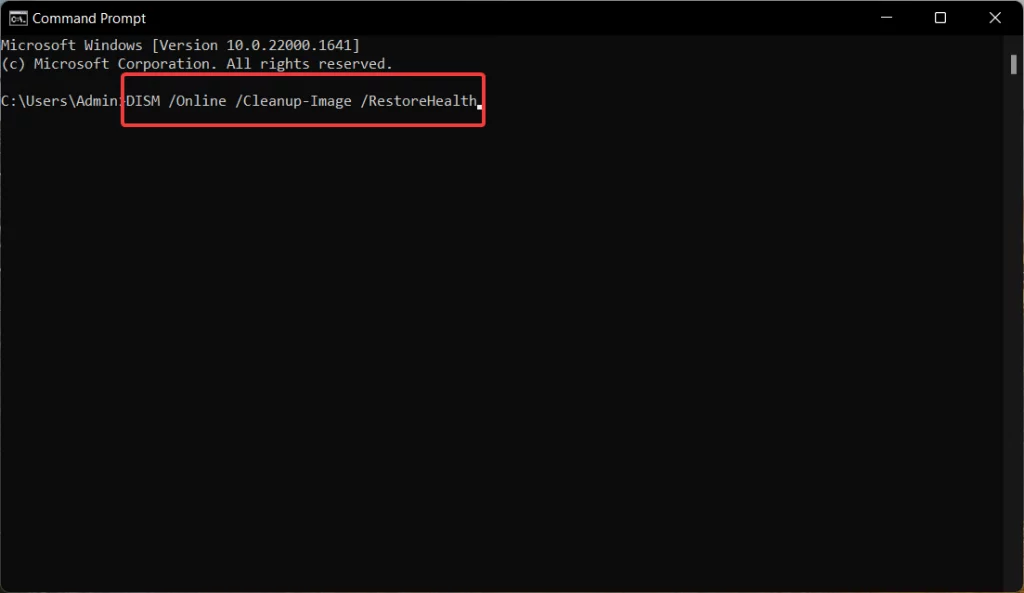
4. Next, reopen the Command Prompt and type DISM /Online /Cleanup-Image /Restorehealth followed by Enter to run the command.
3. Wait for it to finish and your computer will reboot.
4. Use a Windows Repair Tool
A Windows repair tool like Fortect combines many of the in-built Windows utilities into one easy-to-use program. It replaces any missing or damaged system files and jumbled registry entries to ensure your computer returns to its optimal speed.
1. Download and Install Fortect on your computer.
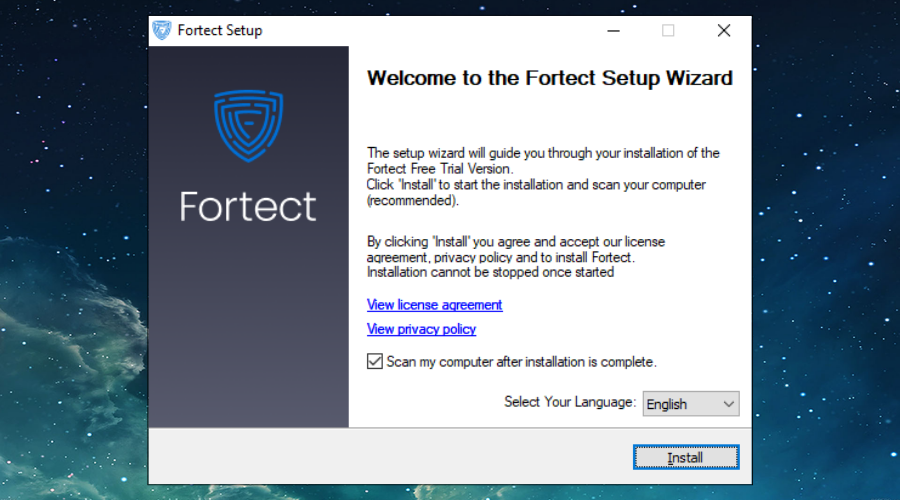
2. Launch the software and Start scanning.
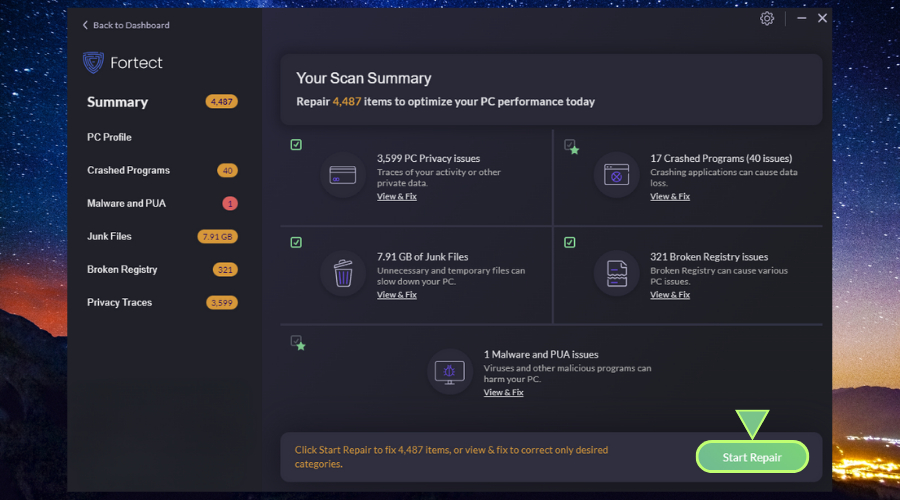
3. Click on Start Repair to start replacing corrupted or missing system files automatically with working versions from its up-to-date repository.
Fortect also does a deep clean of unneeded temp and junk files so your hard drive isn’t slowing things down too.
5. Do a System Restore
If your computer is still running slow, loading a restore point will attempt to revert Windows to its previous working condition prior to power outage. However, you must have already made a restore point for this to work.
1. Type restore in the start menu search bar and select Create a restore point from the results.
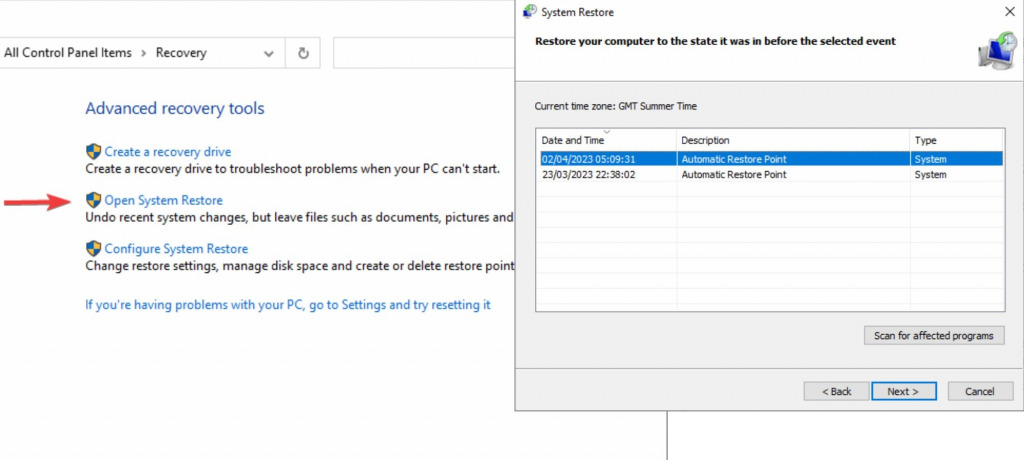
2. From the System Properties window, go to the System Restore heading and click the Open System Restore link.
3. Click through to find your restore points and select the restore point that is closest to the date of the outage.
4. Click Finish and confirm the restoration. Your computer will then restart.
The final word on getting a slow computer after power outage or surge problems
Most of the time a power outage isn’t a critical problem. If hardware problems have been ruled out, you are likely facing a few corrupted files that were in memory when Windows unexpectedly shutdown.
By following the above steps in order, you stand the best chance of returning your computer to its original speed.




